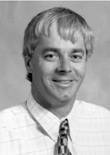Jan Hopmans (USA)

Address: Department of Land, Air and Water Resources,
University of California Davis, CA 95616, USA
Age:52
E-mail:
Position: Professor of Vadose Zone Hydrology (since 1988)
1. When did you decide to study soil science?
As an undergraduate student I was majoring in Hydraulics and Hydrology at Wageningen University. While in my fourth year or so, I talked with my room mate who majored in Soil Science, and was studying under Professor Gerry Bolt. It was then that I took my first upper division course in Soil Physics, taught for the first time by a team consisting of Peter Raats, Johan Bouma and Chris Dirksen. Although very challenging, together they offered me plenty of reasons to continue in Soil Science. Subsequently, I enrolled in a 6-month project with Dr. Toon Janse, to conduct a field study on the application of radar to evaluate soil moisture. This was done in collaboration with the Delft Technical University.
2. Who has been your most influential teacher?
After my undergraduate studies in Wageningen I pursued a PhD in Soil Physics with Dr. Jacob Dane at Auburn University, Auburn, AL. With him, I studied the coupled transport of heat and water using dedicated laboratory experiments using gamma ray radiography. Jacob taught me much of being well prepared, dedication and details. After accepting my current position at the University of California, Davis, I was mentored by Dr. Don Nielsen for the first 5 years so. He learnt me valuable lessons about the need to be innovative in your research and teaching, and how to conduct research while doing administrative work at the same time.
3. What do you find most exciting about soil science?
When starting my Soil Science career as a graduate student, soil physics was unique, as the movement of water in soils and associated transport was generally studied by soil physicists only. However, very soon thereafter, it became clear that improved understanding of flow in soils was needed for engineering and general environmental applications. We started to read about soil studies done by scientists other than soil scientists, including hydrologists and environmental engineers. I find the most exciting part of my profession to work towards integration of soil science with other, related sciences.
4. How would you stimulate teenagers and young graduates to study soil science?
I would like to emphasize that soil science is a global earth science discipline, linking the atmosphere with the land surface through exchange of heat, gases and water. Through the study of soil science and its integration with other disciplines such as hydrology, engineering, agronomy, ecology, atmospheric science and environmental sciences, we can better solve societal problems such as air quality, climate change, biodiversity, water quality, sustainability of irrigated agriculture, and other environmental changes at local, regional, continental and global scales.
5. How do you see the future of soil science?
The future of soil science is on the balance, so to speak. I am convinced that Soil Science by itself has little future. Soil Science programs are disappearing globally, because of low student enrollments. Yet, there is a very clear future for soil science expertise as soil science knowledge is required to effectively solve the societal problems listed under (4). Therefore, I urge academic programs to seek the integration of soil science with other related curricula. Moreover, we should convince the scientific community that soil science is a critical component of the earth's environmental system. Existing academic programs with a Soil Science degree should seek ways to ensure continuity of their unique Program.




